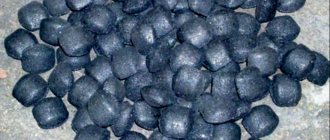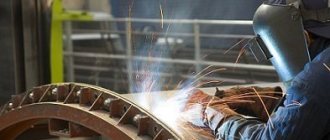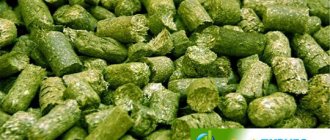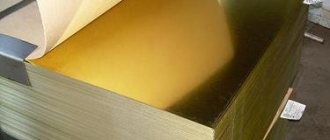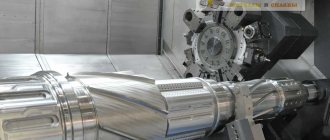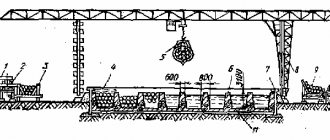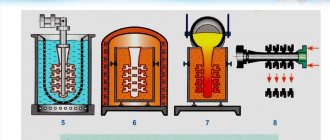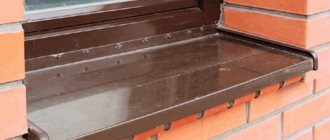One of the most specific materials used by many people in daily life is charcoal, also called activated carbon. The use of such raw materials as fuel has been practiced since ancient times. At that time, simple, time-consuming manufacturing methods were used in its production; coal production volumes were small. But as you know, demand creates supply!
Nowadays, especially in forested regions, industrial production of charcoal is developed. The technology, equipment, new ideas and solutions used today are modern and wide-ranging. In total, this situation allows you to quickly obtain high-quality raw materials; such a business is profitable and has great prospects.
What is charcoal
The unique properties of charcoal have been known for a long time. The fact that humanity began to use charcoal for its needs is known from archaeological excavations. Entire ancient cities and settlements used charcoal production as the main source of their income. Actually, the first environmental disasters were associated with the massive cutting down of trees to obtain this product. For example, in Crimea, in order to make amphorae for wheat, the Karaites and Genoese cut down relict forests. Because of this, some areas of Crimea are still considered unsuitable for living. This situation marked the beginning of the development of coal in England and France.
Charcoal is produced by burning wood of various species. A special feature of the process is that as a result of high-temperature exposure, the structure of wood tissue changes - chemical elements are burned out, but carbon remains. The chemical formula of the resulting product shows that its composition contains on average up to 84% non-volatile carbon. When burned, this fuel avoids the release of the most dangerous combustion product for humans - carbon monoxide. It is known from chemistry that it is this colorless and odorless gas that is released during the combustion of volatile substances without access to oxygen.
In addition, the properties of charcoal make it possible to use it in other important processes for humans - water and air purification, as a medicine, even artists have found use for this material.
But still, the composition of the material, in which carbon is the main element, has found the greatest application in industry:
- metallurgy - catalyst and reducing agent in the production of iron and steel;
- chemical industry - filters for hazardous industries;
- energy - fuel, fillers for filtration units.
Today, there are many known methods for extracting this product, from the method in which charcoal is burned in a pit, to high-tech methods for producing briquettes. In this case, not whole tracts of valuable trees are used as raw materials, but compressed sawdust of trees.
Thus, the resulting value of charcoal is:
- High content of non-volatile carbon and absence of phosphorus and sulfur;
- High heat transfer during combustion;
- Long burning period;
- Possibility of use as a renewable resource;
- Almost in its complete combustion without any residue.
Main Buyers
Given the high demand, the production and sale of finished coal can turn into a respectable business with a very high percentage of profitability. Food service facilities alone consume more than four million tons of charcoal in one season. If we add to this other enterprises and living facilities (schools, kindergartens, universities, etc.), as well as private consumption (hunting, fishing, summer cottages), you will get a completely gigantic figure. It is necessary to take into account that this form of business does not require any high-tech and costly forms of production.
Types and grades of wood fuel
The most common classification of this type of fuel divides it by type of material of origin. This classification makes it possible to select a product according to its calorific value. Depending on the color, fuel can be divided into types:
- Black – made from soft deciduous trees (alder, poplar, aspen);
- White – burned from hard wood (oak, hornbeam, birch);
- Red – obtained from coniferous trees using soft charcoal technology.
According to the state standard GOST 7657-84, charcoal is divided into three classes - A, B, C. GOST defines the highest grade as fuel grade A - in it the mass fraction of non-volatile carbon is 90% - 78%. For grade B, the mass fraction is 88-77%, grade B should contain from 77 to 67% carbon.
GOST 7657-84 Charcoal. Specifications
1 file(s) 446.94 KB
In addition, there are other quality standards for charcoal, for example, the specific gravity of charcoal, the mass of 1 dm3, the mass fraction of ash, and the presence of fractions of certain size in the volume. True, these standards apply mainly to industrial products. The production of charcoal at home is usually used to assess the quality by studying the color of the product and the presence of different fractions in the composition - the number of large pieces, medium, small and wood dust.
Safety regulations
In accordance with safety precautions, the minimum volume of coal that can be subject to spontaneous combustion is 100 cubic decimeters. When working with volumes that are higher than indicated, measures are necessary to prevent spontaneous combustion of raw materials.
It is unacceptable to strictly limit raw materials from interaction with oxidizing substances. It is also important to prevent coal dust from accumulating.
When producing charcoal, it is necessary to adhere to labor protection rules R O-00-97.
When moving finished raw materials, steel barrels, paper bags, and polypropylene are used. Coal is stored in closed warehouses, special containers whose purpose is to protect the raw material from precipitation. Transportation is carried out in packages, or simply in bulk in closed wagons or trucks.
Properties
The beneficial properties of this fuel are determined by several indicators. First of all, they are determined by the combustion temperature of the charcoal. Thus, pressed fuel is actively used in the smelting of cast iron and steel. Reaching a high combustion temperature during melting (over 1350 degrees), the chemical composition of charcoal acts as a catalyst for the reaction in the metal. In blast furnace production during the smelting of cast iron today, the share of fuel used is small, only 7-8%, but the cast iron produced is of the highest quality. This is achieved due to the properties of charcoal - it does not contain substances that, when heated, form volatile gases, and during combustion, impurities of substances that deteriorate the characteristics and structure of the metal. The high density and specific gravity of charcoal used in metallurgy make it possible to maintain the uniformity of the smelting process without the use of additional technologies.
Among the beneficial properties of charcoal are its high combustion temperature and long-term release of high temperature heat. This is especially clearly demonstrated when preparing dishes on the grill. Once ignited, the fuel quickly reaches a high temperature and maintains combustion for several hours.
An important indicator for fuel is the ash content. According to GOST, the highest class of charcoal when burned has an ash content of 2.5 to 3%. For domestic needs, class B is usually used; it is suitable for both heating and cooking. Unlike the highest class with a higher combustion temperature, the use of class B coals poses less danger, primarily due to the lower combustion temperature - it is about 300 degrees lower. This difference between the combustion temperatures of the two types of charcoal is associated with the structure, size of the bunts and the type of fuel preparation. A higher temperature is obtained when coals from denser layers of wood are burned. In addition, storage of class A material provides for an increase of up to 20% in the presence of water in the volume of the entire mass.
An important indicator for charcoal is the homogeneity of the mass, so in the total mass of grade A, the 25 and 12 mm fractions should be no more than 12% in total, while at the same time there should be no smut in the composition of the volume at all. In the artisanal production of charcoal with your own hands, the properties are determined by the color, size of the smut and the amount of dust. It is believed that the larger the fraction and the more saturated its color, the higher its quality. In many ways, this method is justified, since it indirectly indicates the chemical composition of the fuel and the presence of a large amount of carbon in it. A more in-depth laboratory chemical analysis can show the presence or absence of sulfur, phosphorus, heavy metal salts and individual resin-based compounds in its composition. During laboratory analysis, the ash content of the material is also checked. For premium quality fuel, the ash content is 2.5-3%, for average quality it is 3.5-4%.
The density depends on the brand and type of wood from which it is made. The weight of a standard volume of fuel is 1 cubic meter. meter is:
- From spruce wood – 100-120 kg;
- Pine – 130-140 kg;
- Birch – 175-185 kg;
- Bukovogo – 187-195;
- Oak - 200-215.
The material itself is very porous; if we take the ratio of the pore volume to the total volume of the substance, then for birch charcoal it will be 72%, for spruce charcoal 80%. Because of this, the specific density of charcoal, depending on the material of origin, can be:
- Spruce – 0.26 g/cm3;
- Pine – 0.29 g/cm3;
- Birch – 0.38 g/cm3;
It is the high porosity of the material that requires special care when lighting in the grill and barbecue. First of all, before ignition, you need to treat the coals with an alcohol-containing liquid and give a little time for it to be absorbed and penetrate as deeply as possible into the pores.
Another indicator of fuel - heat capacity depends on the temperature and humidity of the material. For dry fuel (with a humidity of 7-15%) the average heat capacity is 0.18 kcal/kg; for absolutely dry fuel with a humidity of 2-4% the heat capacity is 0.2 kcal/kg.
The calorific value, that is, the ability to release heat, is about 7500-8170 kcal/kg at a temperature of 380-500 degrees.
Application
Today, the use of charcoal in everyday life mainly comes down to three main areas. First of all, you need charcoal for a grill or barbecue; a long burning period, the absence of harmful smoke components and uniform heat allow it to be used as fuel.
The second important point of its use is water and air purification. Why do you need charcoal in a kitchen hood filter? It’s all very simple; it is an excellent sorbent that absorbs all combustion products, dust and soot. Such filters are installed in circulation hoods.
No less interesting is its use as a water filter; it is effective at the fine purification stage when it comes to chemical reagents and biological pollutants.
The third use is for heating and fuel for home workshops. The fuel is highly valued by those involved in pottery and blacksmithing. This is simply an indispensable type of fuel for the forge and kiln.
True, when purchasing, you need to pay attention to the shelf life - the longer the material is stored, the more moisture it absorbs and the less its heat transfer; when burned, it may not produce the required temperature.
What do you need to get started?
After studying the production process, analyzing the market and making the final decision to start a business, the entrepreneur must draw up a business plan that includes all the stages of creating his own enterprise .
Registration
The positive thing is that charcoal production activities are not subject to mandatory licensing .
However, an entrepreneur needs to go through the process of mandatory state registration:
- You can choose an individual entrepreneur or LLC as an organizational form
- The appropriate tax regime is the Simplified Taxation System. The choice of object for tax (Revenue - 6% or Profit - 15%) depends on the marginal policy. If you are going to set a large markup, then it is more profitable to choose “profit” as the object. But if you are going to take the market at the expense of a low markup, then it is more profitable to choose “revenue”.
Workshops and premises
Although modern technologies provide a high level of environmental safety, production must be located outside the city . It is better to place it near factories involved in the harvesting and processing of wood, which will reduce the cost of time and money for transporting raw materials.
The main recommendations are:
- The workshop must be located more than 300 meters from residential premises.
- The production area (land plot) must be at least 200 m2.
- The stoves are placed on a plot of land, in the fresh air.
- It is necessary to prepare a place on the site for a warehouse for raw materials and a warehouse for finished products.
- It is also necessary to prepare premises for staff.
In order to save current expenses, it is better to purchase a plot of land .
Read how to start a handmade soap business. Premises requirements. In the new publication we will find out what documents are required to open a company current account.
At the link https://svoy-biznes.com/biznes-planyi/proizvodstvo/profnastil.html you will find a sample business plan for the production of corrugated sheets.
Equipment
In order to organize a coal production workshop, the following set of equipment is required :
- Charcoal kiln – 120,000 rub. It is the main element of the production process by which waste wood is processed into charcoal. Stationary (installed in one place) and mobile (can be moved from place to place) ovens are available on the market.
- Weight dispensers – 20,000 rub.
- Electric generators – 30,000 rub.
- Wood splitter (hydraulic) – 90,000 rub.
- Chainsaw – 15,000 rub.
- Packaging machine – 100,000 rub.
Above is a complete set of equipment necessary for organizing a workshop. At the initial stage, you can do without a packaging machine and a wood splitter, which will save significant resources at the stage of starting a business.
Raw materials
The issue of the types of wood used was discussed above.
Here we provide a table of wood consumption and charcoal yield .
| Type of wood | Consumption (in 1m3) | Coal output |
| Birch | 500 kg | 140 kg |
| Oak, ash and maple | 550 kg | 160 kg |
| Hornbeam | 630 kg | 180 kg |
| Pine, aspen, spruce, linden | 400 kg | 110 kg |
| Larch and elm | 520 kg | 150 kg |
| Alder | 420 kg | 120 kg |
| Poplar | 380 kg | 100 kg |
As can be seen from the table, the average “yield” of coal from wood is approximately 28% .
Based on this indicator and the production standards, you can plan raw material inventories. It is also worth considering that the consumption of raw materials depends on the equipment used .
If for 1 ton of coal produced in a single-chamber furnace, the consumption is 7 cubic meters of wood, then for three-chamber furnaces the consumption will be much less.
Production process technology
The technology for making charcoal has not undergone much change since the inception of the industry. The main technology for producing charcoal is still kiln burning. Today, burning furnaces have changed their design, making the process more technologically advanced. But the principle of how to make charcoal remains the same - combustion of wood raw materials without access to oxygen is the main condition. The technological process consists of several cycles:
- Drying raw materials;
- Pyrolysis process;
- Cooling.
In principle, this option is similar to how charcoal is made at home. The only difference is that you can make charcoal in a home installation using improvised means, but in industrial installations each phase is strictly controlled. The result is fuel that meets the description in state standards.
Preparation of material
Not every piece of wood can use charcoal for cooking. These are fruit trees (pear, apple, cherry), deciduous trees (alder, oak, maple) and the common birch. Coniferous species are not suitable at all. Such raw materials contain resins (this will ruin the taste of the meat).
Construction scraps are not used to make coal for barbecues: impregnations and adhesives will leave carcinogenic substances in the coal during combustion.
Birch is not the best option, but it is a common tree. The coal turns out a little hotter than necessary. Although, knowing this feature, you can adapt and make great barbecue.
The second requirement is dry firewood. Moisture is harmful for pyrolysis. In industrial production, raw materials are dried in special ovens with gases up to 150 ° C, and when burning “for yourself” you need to either let the wood dry or use drying material.
Rotten wood cannot be burned into charcoal.
The bark degrades the quality of the coal and, if possible, should be removed from the firewood.
Selection of raw materials
It is optimal to select hardwood trees for burning. Sometimes it is advised to strictly select trees of the same species. In this case, it will be possible to obtain combustion at one temperature, and the result is a homogeneous product of good quality. However, in the process of work it often happens that different types of raw materials are used in production. This is not a problem; when filling a vertical oven, the filling is first made of hardwood, and then of softwood.
Drying wood
Drying is carried out in a firing chamber at a temperature of 140-160 degrees. The use of higher temperatures leads to cracking of the smut and, as a result, the production of fine coals. Drying is carried out in an atmosphere of flue gases and at the end of it the wood with a moisture content of 4-5% should be obtained.
Pyrolysis
The second stage in the production of charcoal is pyrolysis. This stage consists of dry distillation, when the temperature rises to 150-300 degrees to remove all remaining moisture. Upon reaching 300-301 degrees, the process of exothermic pyrolysis begins. The wood begins to change color, the internal temperature rises, and for some time it exceeds the temperature in the chamber. At this moment, no additional heat is required, since the process of evaporation of volatile substances begins. Upon reaching 400 degrees, the wood finally changes color and becomes black. Wood purified by pyrolysis contains 65-70% carbon.
Calcination
After some time, when the reaction begins to fade, the temperature begins to drop and the risk of spontaneous combustion increases. In order to prevent this in industrial production, calcination is used - maintaining the required temperature by external heating. To do this, the container with wood is additionally heated from the outside, as a result of which the proportion of non-volatile carbon increases to 85-90%. Also, by regulating external heating, the temperature is reduced to a point where spontaneous combustion is no longer possible, after which the cooling process begins.
Scope of application
Charcoal is used in industry for the following purposes:
- for use as part of filters;
- for melting crystalline silicon;
- for use in metallurgy (saturation of steel with carbon, production of pure alloys);
- for the production of glass, some types of plastics, paints;
- for the production of natural dye for the food industry;
- for the production of activated carbon;
- for use in agriculture;
- for use as a convenient household fuel for stoves, fireplaces, barbecues.
When burned in stoves and fireplaces, this type of fuel burns with virtually no flames, providing even and intense heat. The most highly valued product is grade A, which is made from hardwood.
Important! If charcoal is used indoors (for heating or cooking), it is recommended to light it without using chemical kindling agents. This will avoid the appearance of an unpleasant odor and harmful substances falling into the food. In this case, coals are ignited using paper and dry splinters.
Charcoal production equipment
You can make fuel at home using improvised means and even in an earthen pit. For industrial production, retort-type combustion furnaces are used. These can be either stationary or mobile installations. The main element of such installations is the combustion container. The pyrolysis barrel is the most expensive element of the installation. Today, manufacturers are offered several options for industrial installations, which include a full set of equipment for the job.
How to make charcoal at home
Making charcoal at home is done using improvised means. This is the simplest technology, although it does not guarantee the production of high-quality charcoal.
Before making charcoal with your own hands, preparatory work is carried out, which necessarily includes measures to ensure fire safety. To obtain high-quality charcoal, logs of the same type of wood are selected, they are cleared of bark and chopped into approximately equal smuts.
Before you start making charcoal with your own hands, the burning method is determined. The most popular ways to get charcoal at home is by burning wood:
- in an earthen pit;
- in a barrel;
- in the oven.
The first two are carried out outdoors, the last is carried out in two stages - the first in the stove (optimally if the stove was built outdoors), and the second on the street.
In the hole
This is the cheapest way to make charcoal at home. To do this, a hole 0.8-1.0 m deep and 0.5-0.6 m in diameter is dug in the ground. Firewood is placed at the bottom to start a fire. After the fire is lit, raw materials are placed in the pit. Firewood is stacked to the top. After the fire has engulfed the entire volume of the pit, and the wood gradually begins to burn out, the pit is covered with a metal sheet, and wet earth is poured on top, so as to completely block the access of oxygen.
12-16 hours after closing the pit, carefully open the lid. After about 1-1.5 hours, the smut can be removed. With this method of producing charcoal in a pit, the yield of the finished product is from 25 to 35% of the volume of installed firewood.
In a barrel
You can make charcoal at home in a barrel. To do this, take a metal barrel. For a large volume you will need a large 200 liter barrel; for coal with a volume of 3-4 kg, a 50 liter barrel is sufficient. For work, it is advisable to choose a barrel with thick walls, a large neck and, if possible, a lid that can be locked. To obtain charcoal in a barrel, the technology does not change much, the only thing is that it is recommended to place it on bricks in order to warm it up afterwards.
The barrel is filled with wood, ignited and after it flares up, it is closed with a lid. After about 12-18 hours for a 200 liter container, it is recommended to light a fire under the barrel and warm it up for 3-4 hours. After warming up, the barrel can be left to cool.
Remove the lid carefully so as not to inhale carbon monoxide. The material can be removed after 4-6 hours. When the barrel is fully loaded, you can get up to 40-50% of the volume of finished fuel.
In the oven
You can also make charcoal in a stove. The process consists of two stages. The first stage is burning wood in the stove. This is done until the firewood is completely burned out. Next, the firebrands are removed from the furnace firebox and placed in a bucket or ceramic container and covered with a lid. The yield of charcoal with this method is small, only 2-2.5 kg.
Types of coal
Almost everyone thinks that the charcoal sold in stores and gas stations is similar, but in fact there are a large number of types.
| Red coal | It is made from coniferous wood using a special technological system of malleable carbon. |
| White coal | When creating it, deciduous types of wood are used. |
| Black coal | When producing it, wood of a fairly soft type is used. |
Many individual entrepreneurs create only traditional coal, which is black in color, but if you are suddenly trying to capture the economic market, then the list must be expanded. You should be guided by what materials you can get: if the region has oak forests, you will have to use this material.
Among other things, you should remember that according to GOST there are 3 types, A, B and C. The higher the quality of the type, the better the coal and the greater the desire to obtain it, so make an exclusively high-quality product.
Then we will analyze the technology for extracting this coal product. There is nothing difficult about this - at the head of the process is a process such as pyrolysis. The required materials, purchased at a set temperature without access to air, are prepared and converted into charcoal. The following procedure must be followed:
- The necessary raw materials are placed in the furnace on our own.
- The stove lights up and combustion can be observed.
- The coal is unloaded, undergoes a cooling process, is packaged and sent to the warehouse.
As you can see, there is nothing labor-intensive in the process, but safety procedures must be strictly followed during production. Be sure to follow fire safety precautions, install an alarm device and keep at least several fire extinguishers readily available so that in the event of a fire it can actually be eliminated.
Product labeling
In industrial production, several points need to be taken into account. Before packaging, the material must be cooled and packaged (depending on customer requirements). The following information must be indicated on the packing slip or on the package itself:
- manufacturer;
- the name of the product is indicated;
- information about the origin of the fuel;
- the certificate number is indicated;
- net weight;
- there must be information about fire hazard class 4;
- storage rules and instructions for use are indicated.
